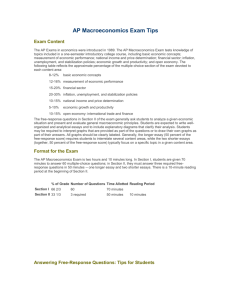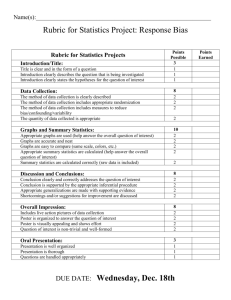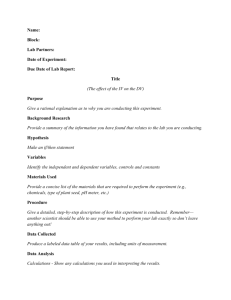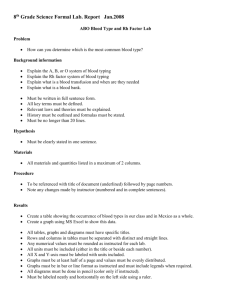AP Economics - AP MICROECONOMICS
advertisement
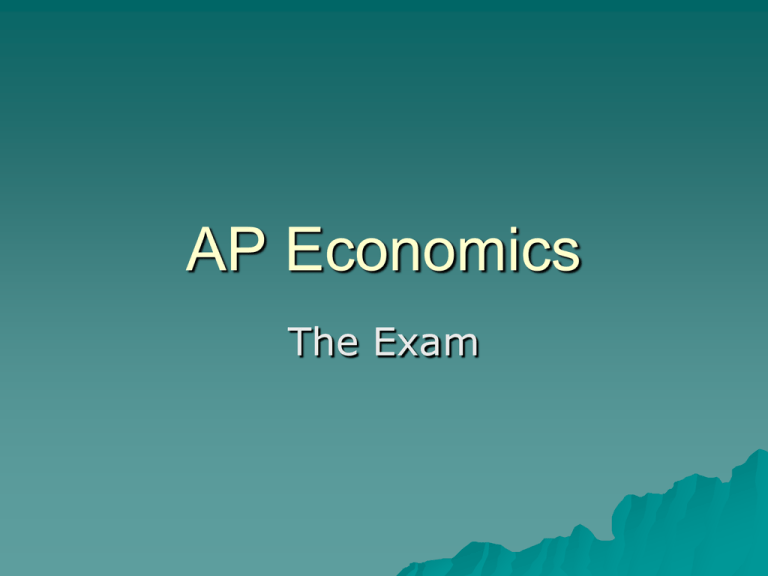
AP Economics The Exam The AP Microeconomics Exam and the AP Macroeconomics Exam are each a little over two hours long. •The multiple-choice section accounts for twothirds of the student’s exam grade and the freeresponse section for the remaining one-third. •Each exam consists of a 70-minute multiplechoice section and a 60-minute free-response section. . The Readers’ scores on the free-response questions are combined with the results of the computerscored multiple-choice questions; the weighted raw scores are summed to give a composite score. The composite score is then converted to a grade on AP’s 5-point scale: AP GRADE QUALIFICATION 5 Extremely well qualified 4 Well qualified 3 Qualified 2 Possibly qualified 1 No recommendation AP Exam grades of 5 are equivalent to A grades in the corresponding college course. AP Exam grades of 4 are equivalent to grades of A, B+, and B in college. AP Exam grades of 3 are equivalent to grades of B, C+, and C in college. Free Response Some questions in the free-response section require graphical analysis. The free-response section begins with a mandatory 10-minute reading period. During this period, students are advised to read each of the questions, sketch graphs, make notes, and plan their answers. Students then have 50 minutes to write their answers. Multiple Choice All Multiple Choice questions present 5 possible answers. One-fourth of a point is deducted for each incorrect answer therefore take only educated guesses when answering. 1. Scarcity is correctly described by which of the following statements? I. Scarcity exists if there are more uses for resources than can be satisfied at one time. II. Scarcity exists if decisions must be made about alternative uses for resources. III. Scarcity would not exist in a society in which people wanted to help others instead of themselves. (A) I only (B) II only (C) III only (D) I and II only (E) I, II, and III Answer to Question 1 D III. Is incorrect because scarcity always exists regardless of society, government, or wealth 2. Which of the following situations would necessarily lead to an increase in the price of peaches? (A) The wage paid to peach farm workers rises at the same time that medical researchers find that eating peaches reduces the chances of a person’s developing cancer. (B) While the wages of peach farm workers fall drastically, the peach industry launches a highly successful advertising campaign for peaches. (C) A breakthrough in technology enables peach farmers to use the same amount of resources as before to produce more peaches per acre. (D) The prices of apples and oranges fall. (E) Weather during the growing season is ideal for peach production. Answer to Question 2 A B creates a neutral scenario C, D, E would all lead to a reduction in the price of peaches 3. The diagram above shows the demand and supply curves for a normal good. The equilibrium price could rise from P1 to P2 if (A) consumers’ incomes increased (B) P2 were set as a legal maximum (C) subsidies on the product increased (D) the price of a complementary product increased (E) costs of production were substantially lowered Answer to Question 3 A B reads “legal maximum” C, and E are related to increasing supply which will cause a decrease in the price D means more consumers will buy this product because its price is lower Free Response In the free-response section of the exam, students have a 10minute reading period and 50 minutes to answer one long and two short essay questions. The essays generally require students to interrelate different content areas and may ask them to analyze a given economic situation and to set forth and evaluate general microeconomics principles. A student is expected to show both analytical and organizational skills in writing the essays and to incorporate explanatory diagrams that clarify his or her analysis. Some questions will require students to interpret graphs that are provided as part of the questions; other questions will require students to draw their own graphs as part of their answers. All graphs should be clearly labeled. Good News about Free Response Unlike AP US History or English, your readers are economists who value ‘to the point’ answers. Do not repeat the question as a statement Do use economic terms correctly Do include correctly labeled graphs, charts But you must use blue/black ink pens and you can’t have calculators 1. J & P Company operates in a perfectly competitive market for smoke alarms. J & P is currently earning short-run positive economic profits. (A) Using correctly labeled side-by-side graphs for the smoke alarm market and J & P Company, indicate each of the following for both the market and the J & P Company. (i) Price (ii) Output (B) In the graph in part (a) for J & P, indicate the area of economic profits that J & P Company is earning in the short run. (C) Using a new set of correctly labeled side-by-side graphs for the smoke alarm market and J & P Company, show what will happen in the long run to each of the following. (i) Long-run equilibrium price and quantity in the market (ii) Long-run equilibrium price and quantity for J & P Company (D) Assume that purchases of smoke alarms create positive externalities. Draw a correctly labeled graph of the smoke alarm market. (i) Label the market equilibrium quantity as Qm. (ii) Label the socially optimum equilibrium quantity as Qs. (E) Identify one government policy that could be implemented to encourage the industry to produce the socially optimum level of smoke alarms. 2. (A) Draw a correctly labeled graph showing a typical monopoly that is maximizing profit and indicate each of the following. (i) Price (ii) Quantity of output (iii) Profit (B) Describe and explain the relationship between the monopolist’s demand curve and marginal revenue curve. (C) Label each of the following on your graph in part (a). (i) Consumer surplus (ii) Deadweight loss Summary Don’t freak—you will learn the language. We will do lots of practice and actual testing. I can guide you. You can do this!
